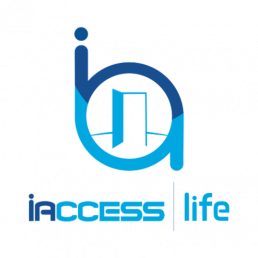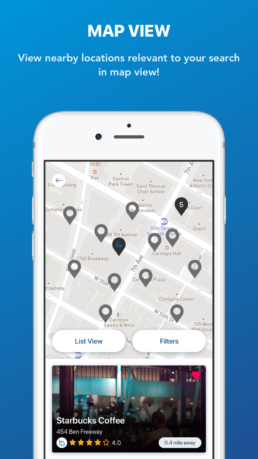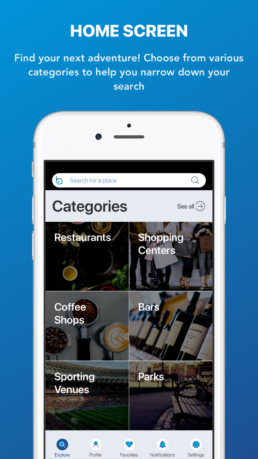For many, calling a restaurant ahead of time to ask if it is wheelchair friendly whenever they want to go out is the only option when dealing with the question of how to find wheelchair accessible restaurants near them. Calling a restaurant to figure out whether they are wheelchair accessible is unreliable due to the lack of education on what being “accessible” really means. Often the employee on the phone has a limited understanding of the various challenges someone who uses a wheelchair or mobility aid may face when going out. Too often, when you call a restaurant, you are met with a busy host or hostess that gives you a blanket answer to get you off the phone without fully understanding what your accessibility needs are. As Ace Ratcliff put it in her fantastic Eater Article, “Sometimes they answer unequivocally, but view the restaurant through the lens of not being disabled themselves, not realizing both the obvious and subtle challenges created by inaccessibility. Sometimes they answer unequivocally with an addendum. “Yes, we’re wheelchair accessible, but…there’s a small step at the entrance, or you’ll have to come in the back door, or we can’t seat you near everyone else, there’s not enough room.”
What if you could know before you go?
What if you could know before you go? Would you take more chances, would you try something new? I personally feel that performing everyday tasks as a wheelchair user is often a test of getting out of your comfort zone. For some, including our co-founder Brandon, being a wheelchair user can feel like a hindrance on how one goes through life and stop one from trying new things, exploring new places and making new memories. Having a plan and knowing what you are getting yourself into before you show up somewhere makes life easier for everyone, but this especially rings true for the mobility impaired. This is driving force behind our new mobile app, iAccess Life. iAccess Life aims to revolutionize accessibility by giving those with mobility impairments who use mobility aides like wheelchairs and walkers a platform for their voices to be heard with respect to their experiences with accessibility. The app is a lifestyle mobile application for users with mobility impairments & physical disabilities to search for, as well as rate & review establishments based on their accessibility. Users can rate parking, seating, entrance & bathrooms of public places based on accessibility. We have compiled some of the best tips on how to find wheelchair accessible restaurants near you.
Go through the Restaurant Reviews on iAccess Life App
The iAccess Life app relies on crowd sourced ratings and reviews from users all around the world. The majority of the ratings and reviews are left by users with mobility impairments who understand the fundamental requirements to consider when gauging the accessibility of a public establishment. Having access to an app with real time accessibility information lets you search for wheelchair accessible restaurants near you. In addition, it provides a platform for you to share your experiences with accessibility in restaurants in your area so that others can benefit from your experiences.
In the app, all restaurants are rated out of 5 stars. The higher the rating, the more accessible it is. Some guidelines to look for while rating & reviewing a restaurant:
- How many handicap parking spots are there and are they in close proximity to the door?
- Is there a curb outside that prevents the user from accessing the door?
- Does the entrance have an automatic door opener and if not, is the door heavy and difficulty to pull open?
- Is the interior space very crowded or tight, would someone in a push or power wheelchair be able to easily maneuver between tables and wait staff?
- Are the tables ate a good height for someone with a wheelchair to eat comfortably? Is the seating limited to high tops or booths which are not very accessible?
- Can the diner easily get to the restroom, are the restroom stalls big enough for a wheelchair or a caretaker and do they have pull bars to assist a user in transferring to a toilet seat? Are the sinks at a height that someone in a wheelchair can reach?
The best part about the app is that there is no limit to the number of restaurants to be rated. All paraplegics and users that use various forms of mobility aids can significantly help each other by leaving a review of whatever restaurant they ate at. This acts as a warning or a seal of approval to other wheelchair users and saves them from having unpleasant experiences at that location.
Go Online and Look Up Your Desired Restaurant
One of the worst experiences a paraplegic can encounter is to arrive at a venue only to find that the entrance or restroom are not wheelchair friendly. Do not hesitate to go to your potential restaurant’s website to see what kind of accessibility information they have posted or at least to find contact information so you can call ahead and ask. Forward thinking restaurants will state whether their spaces are wheelchair friendly or not. However, it is important to be thorough while conducting your ‘research ‘ on that specific restaurant. For instance, they may state that they have ramps. This is not enough to show that someone using a mobility aide such as a wheelchair will have a comfortable time while there. The tables may be too low, the restrooms may be too narrow, and the general space may be too congested for a wheelchair user.
We understand that some restaurants may not be entirely genuine in their description. The iAccess Life App will come in handy as you will be able to read about past experiences from fellow paraplegics concerning the restaurant. Here, you will get all the necessary information about the parking, entrance, seating and restroom submitted by other disabled users with experience dealing with limited accessibility.
Call the Restaurant Ahead of Time
Sometimes you may not have the time to look through the features of a restaurant online. The best alternative would be to make a call and ask to speak to one of the staff members. While making your inquiry, do not hold back. Ask as many questions as you would like, after all, your comfort is at stake. Here are some great questions to ask when looking a wheelchair accessible restaurant near you:
- How high are the tables? Is the table high enough to allow someone in a wheelchair to roll under the table in the place of chair? Are there only booths and high tops which are not desirable for someone using a mobility aid such as wheelchair?
- Does the restaurant have a ramp at the front entrance? Restaurants which do not have ramp may force a paraplegic to get in through the back doors.
- Is there an automatic door opener and if not is the door very heavy or require the user to turn a knob?
- How wide are the restroom doors?
- Does the surface area of the restroom allow a 180° turn?
- Do the restrooms have supporting handlebars?
- Does the restroom stall allow a caregiver to also fit in the stall?
Any employee should be able to provide answers to the following questions, and this will help you decide whether to go to that restaurant or simply pick another.
What Provisions of the Law Cater for Wheelchair Users?
There are various statutes in American Law which provide for the equal treatment of paraplegics. In relation to finding wheelchair access restaurants near you, the Americans with Disabilities Act protects all disabled people against discrimination in all aspects of life, whether it’s at school, the workplace, and transportation. It provides that they should have access to both private and public spaces. Such places include restaurants, hotels, movie theaters, hospitals, among others. In summary, the ADA compliance for restaurants demands that restaurant entrances must be at least 36 inches wide. This ensures that wheelchair users have an easy time passing through such doorways. Similarly, the checkout counters must also have one section that is 36 inches or wider.
According to the 2010 update to ADAAG, the basic ADA guidelines for a single-user restroom are:
- 30-inch by 48-inch access to the sink (the door can’t swing into this rectangle). The measurement starts from the point where a person has 9-inch vertical clearance for their feet and 27-inch vertical clearance for their knees.
- The center line of the toilet must be between 16 and 18 inches from the side wall.
- A clear circle of at least 60 inches around the side wall and 56 inches from the rear wall to allow a wheelchair to turn (the door cannot swing into the minimum required area for wheelchair-accessible toilet compartments).
- A toilet seat height of 17-19 inches.
The Act further states that in areas where seats are provided (such as restaurants), at least 5% of those tables should be easily accessed by wheelchair users.
Accessibility is a Right
As a paraplegic, you have the right to have a pleasant experience wherever you go just like everybody else. Download the iAccess Life App today to see the experiences of other wheelchair users in various restaurants. Remember, the higher the rating, the more wheelchair-friendly the place is.









